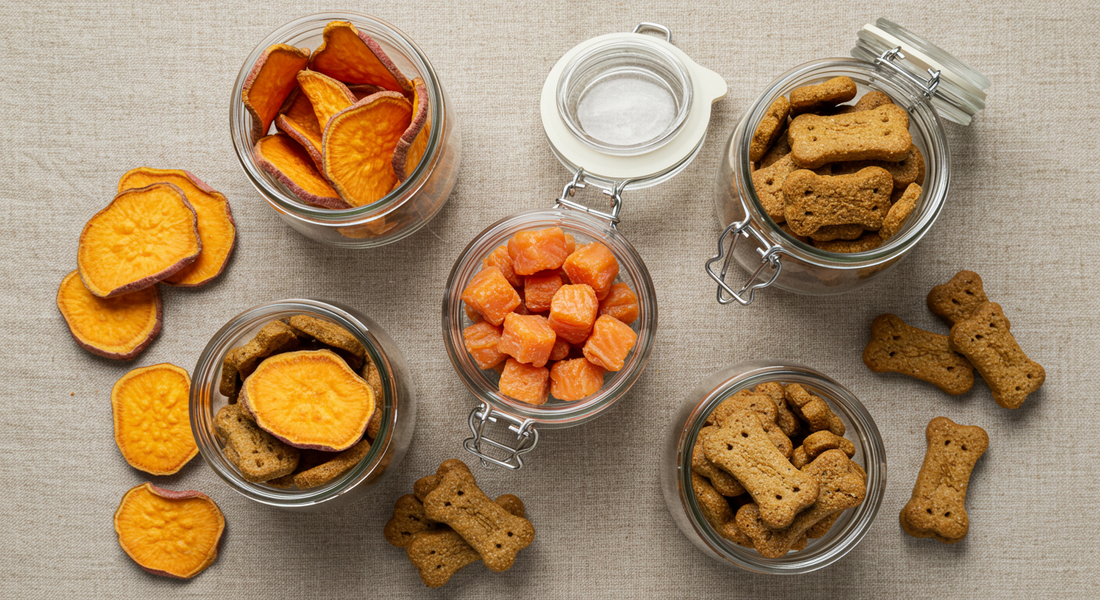
Healthy Treats & Feeding Routines for Pets
Share
Introduction
Nutrition is at the heart of your pet’s health. While meals provide essential sustenance, treats and feeding routines shape daily wellness, behavior, and even emotional balance. Choosing the right snacks and structuring consistent feeding times helps pets thrive while reducing risks such as obesity, digestive issues, or anxiety. At Snuggle&Go, we believe in nourishing pets with both love and intention. Here’s how to build healthier feeding routines and select treats that support your furry friend’s well-being.
1. Understanding the Role of Treats
Treats should complement, not replace, a balanced diet. They serve as training rewards, bonding tools, and enrichment opportunities. But too many—or the wrong kind—can disrupt nutrition.
Veterinarians recommend limiting treats to 10% or less of daily calorie intake. That means choosing snacks that are both tasty and nutritious is key.
2. Healthy Dog Treat Options
Modern pet owners have more options than ever before. Healthy treats include:
- Single-ingredient snacks like dried sweet potato, salmon bites, or freeze-dried chicken.
- Grain-free options for pets with sensitivities.
- Low-calorie biscuits for training sessions.
- Functional treats with added vitamins, probiotics, or joint-support supplements.
Snuggle&Go offers a variety of wholesome treats designed to satisfy without compromising nutrition.
3. Feeding Routines for Different Life Stages
Consistency in feeding helps pets feel secure. Routines should vary depending on age and health:
- Puppies & Kittens: Require 3–4 small meals daily for steady growth.
- Adult Pets: Typically 2 meals a day keep energy stable.
- Senior Pets: May benefit from smaller, more frequent meals to aid digestion and reduce strain.
Sticking to set times also prevents begging and overeating, reinforcing healthier behavior.
4. Safe Human Foods vs. Pet Hazards
While some human foods can be safe and even beneficial—like plain pumpkin or blueberries—others are dangerous. Avoid giving pets chocolate, grapes, onions, garlic, or anything seasoned with salt and spices.
When in doubt, stick to pet-formulated snacks. They are tested for safety and balanced to meet canine and feline needs.
5. Enrichment Through Feeding
Mealtime doesn’t have to be routine—it can be an engaging activity. Using treat-dispensing toys, puzzle feeders, or slow bowls stimulates mental focus and reduces boredom. For high-energy pets, turning feeding into a game helps burn extra calories.
At Snuggle&Go, we provide interactive feeders and puzzle toys that make nutrition fun and purposeful.
6. Proper Storage and Freshness
Just like human food, pet food and treats lose quality if not stored properly. Always:
- Keep kibble in airtight containers to prevent moisture and pests.
- Store treats in resealable bags or jars.
- Note expiration dates and avoid overbuying perishable products.
This simple step preserves flavor and keeps your pet safe.
7. Special Considerations for Senior Pets
Older pets often face dental challenges, reduced metabolism, or joint concerns. Soft treats, easily digestible snacks, and supplements for mobility can make a big difference. Feeding smaller, more frequent meals also helps reduce bloating or discomfort.
Conclusion
Feeding your pet isn’t just about filling a bowl—it’s an opportunity to nurture health, happiness, and trust. From choosing healthy treats to setting consistent feeding routines, every decision impacts their quality of life.
At Snuggle&Go, we believe nutrition should be simple, joyful, and enriching. Our curated collection of wholesome treats, enrichment toys, and feeding essentials makes it easy to support your pet’s well-being every day.
